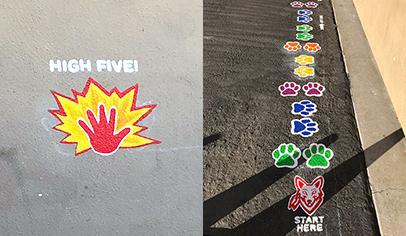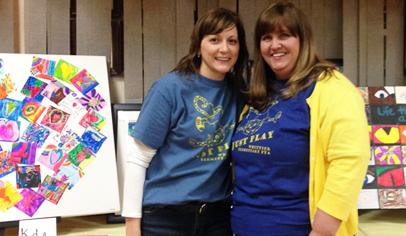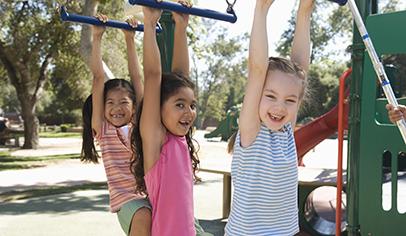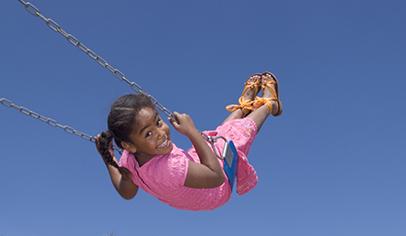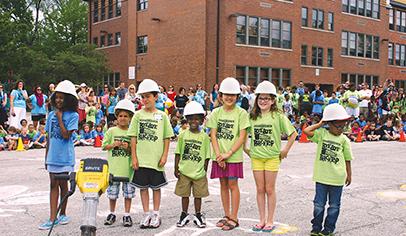If kids have lost interest in your school's playground, it may be time to reevaluate its fun factor. Figuring out whether children are enjoying themselves can be as simple as watching them.
"One of the first steps is to observe to see if they're excited about play," says Joe Frost, emeritus professor of education at the University of Texas at Austin and a past president of the American Association for the Child's Right to Play. "Perhaps the most exciting form of play is deep play, what I call transcendental play, when they're transcended into a state of acting. They're so involved, so totally immersed, that it carries them along. They're intensely involved. They lose contact in a sense with the outside world.
To achieve that state of play, children need to have the freedom from adult dictates to explore and play on their own and interact with other children."
Susan Solomon agrees. She's the author of American Playgrounds: Revitalizing Community Space and the founder of Curatorial Resources and Research in Princeton, N.J. "One concern about playground equipment is that kids do not interact," she says. "They go up, across, down. There's no reason to work together or even talk to anybody." Although children will create social spaces themselves-under equipment or at the mouth of a big tube slide are two favorites-playgrounds can facilitate interaction. Offer wider slides, for example, that children can go down together. She also urges parents and school administrators to consider whether their playground has room for fantasy. "Does it offer kids a way to play that's unscripted?" she says. "Or is the equipment used in only a few ways? Does it offer the kind of play where they can come up with their own possibilities rather than have it dictated to them?"
Mike Salisbury, head of Earthartist, a landscape architecture firm in Ontario, Canada, that specializes in playground design, suggests looking closely at how different genders and different age groups use the same space in different ways. And when you note a specific behavior, puzzle it out. "If they're all standing on a stone, why is it significant?" he says. "What are they doing? It gives an indication of the kinds of things you could promote in that area. If you have 'king of the mountain' behavior, then maybe there's an opportunity to create that type of behavior elsewhere."
Opportunity also lies in understanding that children relish challenges and options—and that they grow bored without them. For example, instead of monkey bars that are perfectly horizontal, a more challenging structure would place the bars in different positions that require movement up and down as well as across. Or hanging rings not in a single straight row but in three rows can present kids with additional configurations. "You need to build in options," says James Therrell, an assistant professor of education at Northwestern Oklahoma State University and author of How To Play With Kids. "As they master going from one ring to the second ring at age 6, then that piece of equipment is still appealing to them at age 8 or 9 when they feel challenged to zigzag."
Therrell asks kids to draw the elements they'd like to see on their playground. They've offered him creative ideas for slides and for fitting elements together, such as attaching monkey bars to a slide. They've also suggested installing a zip wire, a metal line that goes from a high point to a low one, with a wheel that rolls down like a pulley and a bar for kids to hold onto.
Simple Changes
Injecting more fun into your school's playground doesn't have to be expensive. It might just mean providing a better environment for what you have. One way to do this is to create divisions. "If you take a look at most playgrounds, they're big expanses," Salisbury says. "There's no place to hide, no place to get away from anything. If you can provide even the slightest way of segmenting the space or breaking it up through shrubs or rolling hills or playground equipment, you create areas that are different from other areas."
Hills, swales, and berms can be made from construction waste that otherwise might be hauled to the dump. You could bring in big boulders. Or stop mowing sections of the grass. "It's not costing anything, though people will freak out," Salisbury continues. "I heard kids call unmown hills 'hairy hills.' They're different and tactile." You can add fragrant flowers like gardenia and lavender to appeal to children's sense of smell. You can also create interest in some areas with light and shadow. Another idea is to employ salvage items like tires. Therrell suggests tire mountains, tire forts, and tires spaced around the playground. "They can hop like frogs from tire to tire to make a complete circuit," he says.
An alternative for modifying existing equipment is simply to change the ways it's accessed. Therrell suggests cargo nets, similar to a rope ladder but with four or five different columns across. Other replacements for traditional stairs are a climbing wall or a fire pole.
If possible, you might provide junk materials and tools for children to learn how to build things themselves, with adult supervision. "Children nowadays don't know how to use tools," Frost says. Solomon agrees, citing as the solution the spirit of a dwindling breed known as adventure playgrounds. Under the watchful eye of a "play director," children are given free reign to do what they like with leftover metal, wood, hammers, and nails. "Someone sent me a picture of one of these playgrounds in Germany," Solomon says. "Different age groups worked together. It was a remarkable activity. Kids were constantly building and taking down and recreating this village of rundown houses."
And though they're messy, many playground designers believe that sand and water are essential. "People are afraid of sand because it has a reputation of harboring all kinds of microbes, not to mention glass and needles and all kinds of awful things," Solomon adds. "But most school grounds are closed at the end of the day. You can lock the sandboxes."
As for water, it offers an irresistible lure to youngsters. Salisbury remembers watching a group of children who ignored their playground, gathering instead around a drainpipe grate. "They were dropping stones down to listen to them hit the water," he says. "It was so simple." Solomon describes the appeals of playgrounds and parks she's visited that feature fogging machines, water sprays, or even just small natural pools surrounded by seating. One preschool even reused some old playground equipment to allow kids to experiment with how water flows with gravity and how it can be dammed up.
If you're serious about wanting to make your playground more fun, seek out experts. At Washington Elementary in Alva, Okla., that meant guidance from Therrell, who's a PTO member. Kids love the new additions, which include a dual climbing wall shaped like an inverted V, a figure-eight track for tricycles, several 5-foot-high, fantastical basketball backboards, and a canopied shade area. "The children now look forward to recess," he says. "They stand around less, seeking instead to use the new elements. Teachers and parents now have a renewed sense of pride in the playground and how to collaborate and carry out projects."










